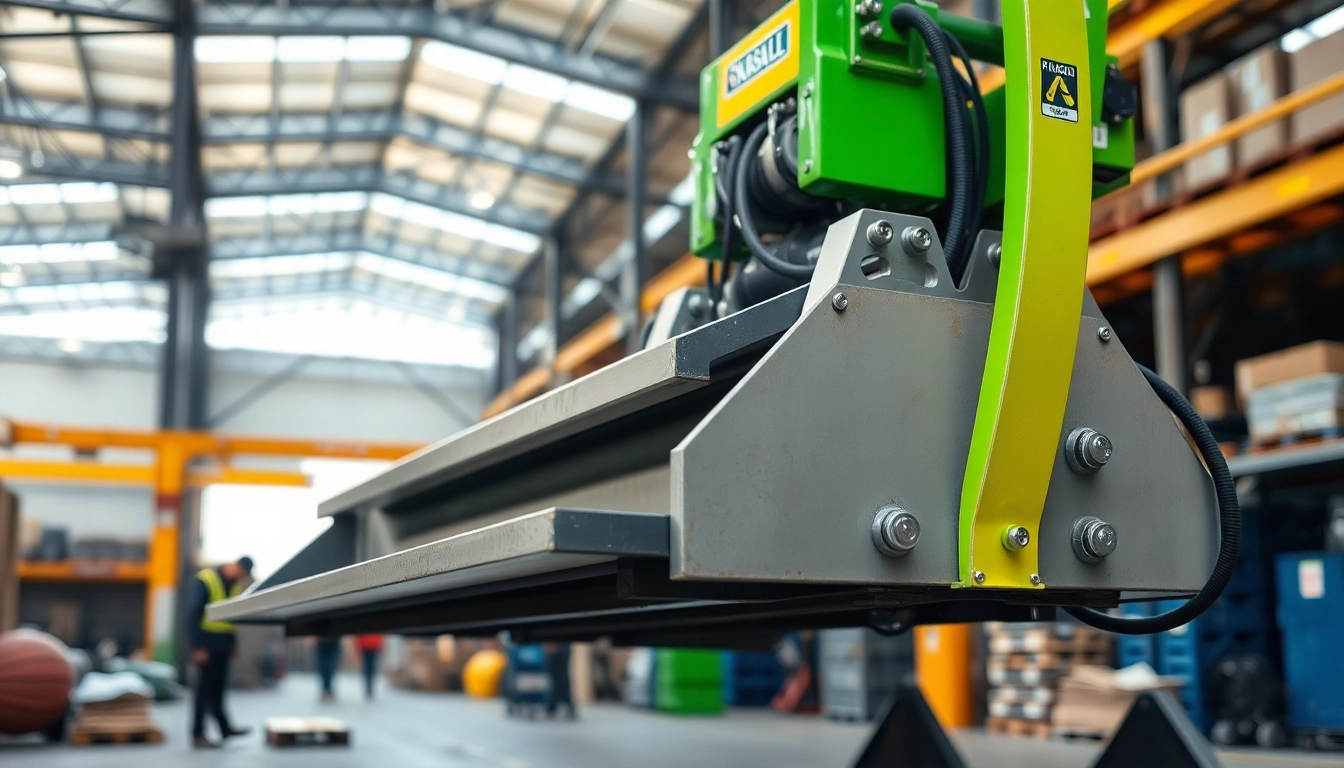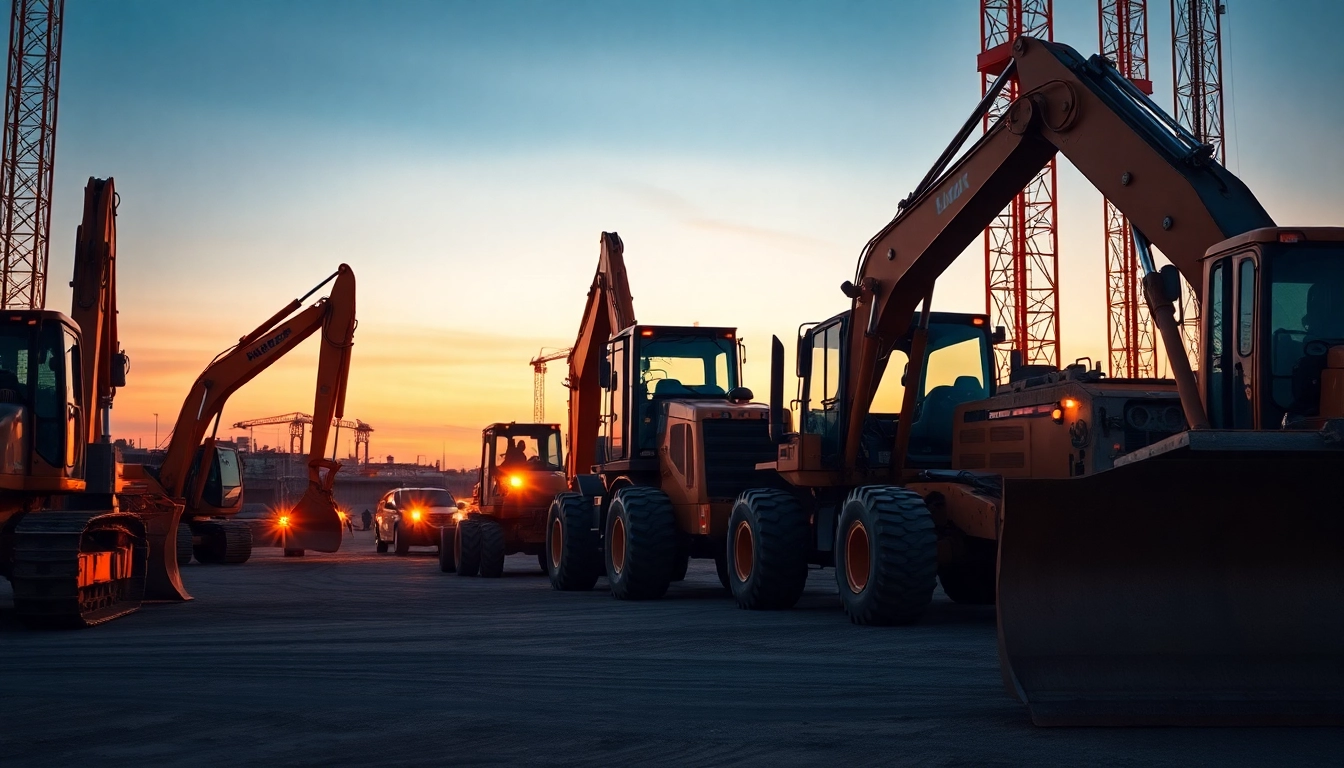Understanding Vacuum Lifting Technology
What is Vacuum Lifting?
Vacuum lifting is a technology that leverages the principles of vacuum power for the efficient handling of materials and goods. This process involves the use of vacuum lifters, which are devices designed to lift and move heavy or awkward loads without the need for manual labor. By utilizing negative air pressure to grip objects, vacuum lifters provide a safe, swift, and effective means of transporting items across various industries. Common applications include manufacturing, construction, and logistics, highlighting its versatility in different operational settings.
For those interested in improving their operational efficiency, understanding the intricacies of vacuum lifting technology can yield significant benefits in terms of productivity and safety.
How Vacuum Lifting Works
The operation of vacuum lifting technology is based on the fundamental physics of air pressure. A vacuum lifter is equipped with a specialized suction pad that adheres to the surface of the load being lifted. Through a pump, air is removed from beneath the pad, creating a vacuum seal that allows the pad to grasp firmly onto the surface of the object. This suction mechanism can lift an array of materials, including glass, metal sheets, and even porous materials like cardboard, provided the right type of pad is used.
Modern vacuum lifters can be powered by either pneumatic systems, utilizing air pressure, or electric components, allowing for a range of lifting capacities and operational functionalities. Some advanced systems even incorporate sensors and automated controls to optimize performance, directly impacting handling efficiency.
Advantages of Vacuum Lifting Over Traditional Methods
Vacuum lifting offers a multitude of advantages compared to traditional methods such as manual lifting, cranes, or hooks:
- Increased Safety: By minimizing manual handling, vacuum lifters significantly reduce the risk of workplace injuries associated with lifting and carrying heavy loads. Workers are less exposed to hazards, creating a safer environment.
- Enhanced Efficiency: Vacuum lifters allow for faster and more streamlined operations. They can lift materials quickly, decreasing the time spent on manual tasks and increasing throughput.
- Reduced Labor Costs: With the automation of lifting tasks, companies can decrease their reliance on human labor for heavy lifting, leading to lower labor costs.
- Versatility: Vacuum lifting devices can be tailored with various suction pads and accessories to handle different materials, making them suitable for a wide range of applications.
- Minimal Surface Damage: The gentle grip of vacuum lifters prevents damage to sensitive items, which is especially crucial in industries dealing with fragile materials like glass and electronics.
Choosing the Right Vacuum Lifting Equipment
Types of Vacuum Lifters Available
Several varieties of vacuum lifters are available, each designed to perform specific tasks depending on the application. Here are some of the most common types:
- Portable Vacuum Lifters: These are ideal for handling smaller, lighter items. They can be easily maneuvered and are excellent for workplaces with limited space.
- Heavy-Duty Vacuum Lifters: Designed for lifting heavier loads, these systems often come with multiple suction pads that can accommodate differing shapes and sizes of objects.
- Automated Vacuum Lifters: Integrated with robotics, these systems are used for high-volume operations where automation can streamline production, such as in manufacturing lines.
- Custom Vacuum Lift Solutions: For specialized requirements, many companies offer custom solutions that can be tailored to the specific needs of a business, including unique sizes or functionalities.
Factors to Consider When Selecting a Vacuum Lifting Device
When selecting a vacuum lifter, several factors should be taken into account to ensure optimal efficiency and performance:
- Load Capacity: Understand the maximum weight the lifter must handle. Selecting a device with an adequate load capacity is crucial to ensure safety and operational effectiveness.
- Type of Material: Consider the material being lifted. Different suction pads are required for various surface textures and weights, from non-porous surfaces like glass to porous materials like cardboard.
- Environmental Conditions: The working environment can impact the performance of vacuum lifters. Factors such as temperature, humidity, and exposure to chemicals should be considered when selecting equipment.
- Mobility Requirements: Evaluate whether the lifter needs to be portable for movement between locations or if it will remain stationary on a production line.
- Integration with Existing Systems: Consider how a new vacuum lifter will integrate with other machinery or processes already in place. Compatibility can affect overall productivity.
Cost vs. Benefits Analysis of Vacuum Lifting Equipment
Investing in vacuum lifting equipment often involves a comprehensive cost-benefit analysis. While the upfront costs can seem high, the long-term savings and benefits often justify the investment:
1. Improved Labor Efficiency: Analyze how much time can be saved with automated lifting versus manual processes. Quick calculations can reveal significant labor reductions.
2. Reduction in Workplace Injuries: The cost of workplace accidents can be astronomically high. Implementing vacuum lifters can curtail injury-related costs significantly.
3. Flexibility and Adaptability: The versatility of vacuum lifting systems allows businesses to pivot more easily to market demands, potentially leading to revenue increases.
4. Maintenance and Longevity: Consider the long-term maintenance costs of vacuum lifting equipment versus traditional lifting methods to achieve better investment returns.
Applications of Vacuum Lifting in Various Industries
Manufacturing and Assembly
Within the manufacturing sector, vacuum lifting is extensively used for handling components during the assembly process. Its ability to manage heavy machinery parts, electronic components, and packaging materials enhances workflow efficiencies. The seamless transition from one assembly phase to another is crucial in maintaining productivity levels.
Construction and Heavy Industry
The construction sector also benefits greatly from vacuum lifting technology. It is commonly used to lift heavy materials such as glass panels, prefabricated components, and materials like concrete. By employing vacuum lifters, construction teams can reduce manual handling injuries and improve the overall safety of the site.
Transportation and Logistics
In transportation and logistics, vacuum lifters are indispensable in the movement of goods. They facilitate the swift loading and unloading of shipments—particularly beneficial in environments like warehouses and shipping docks. Implementing vacuum lifters leads to optimized space utilization and minimized handling times.
Safety Considerations with Vacuum Lifting
Ensuring Safe Operation of Vacuum Lifting Equipment
Safety should always be a primary concern when operating vacuum lifting equipment. Ensuring that operators are trained to use the devices correctly can minimize risks. Regular inspections of the equipment, including checking seals and pad conditions, can prevent malfunctions that could lead to accidents. Establishing safety protocols, such as emergency procedures and regular safety drills, fosters a culture of safety within the organization.
Regular Maintenance Practices
Vacuum lifting equipment requires routine maintenance to ensure optimal performance and longevity. Maintenance practices might include:
- Regularly checking the vacuum pumps and seals for integrity.
- Cleaning suction pads to remove any debris that might hinder performance.
- Calibrating systems periodically to ensure they function within specified parameters.
- Conducting complete equipment assessments at regular intervals, including replacing worn parts before they fail.
Training Workers for Safe Use of Vacuum Lifting
Providing comprehensive training for operators is vital in minimizing risks associated with vacuum lifting technology. Training programs should include:
- Understanding the proper operation of equipment and addressing common mistakes.
- Familiarity with safety procedures and emergency protocols.
- Regular refreshers and hands-on training sessions to keep skills sharp.
Future Trends in Vacuum Lifting Technology
Innovations Shaping Vacuum Lifting
The future of vacuum lifting technology is poised for innovative transformations that promise to enhance efficiency, safety, and sustainability. Technological advancements such as IoT integration will allow for smart monitoring of performance metrics, enabling predictive maintenance and real-time adjustments.
Integration with Automation and Robotics
As automation becomes increasingly prevalent across industries, vacuum lifting solutions will begin to incorporate robotics. Collaborative robots, or cobots, can work alongside vacuum lifters to execute complex tasks that involve both lifting and placing items accurately. This evolution will further streamline operations, reduce error rates, and enhance productivity.
Environmental Considerations in Vacuum Lifting Design
With the growing emphasis on sustainability, the design of vacuum lifting equipment is also evolving. Manufacturers are introducing eco-friendly materials and energy-efficient systems that consume less power while maintaining robust performance. Innovations aimed at reducing carbon footprints, such as regenerative vacuum systems, will be increasingly attractive in the coming years.



